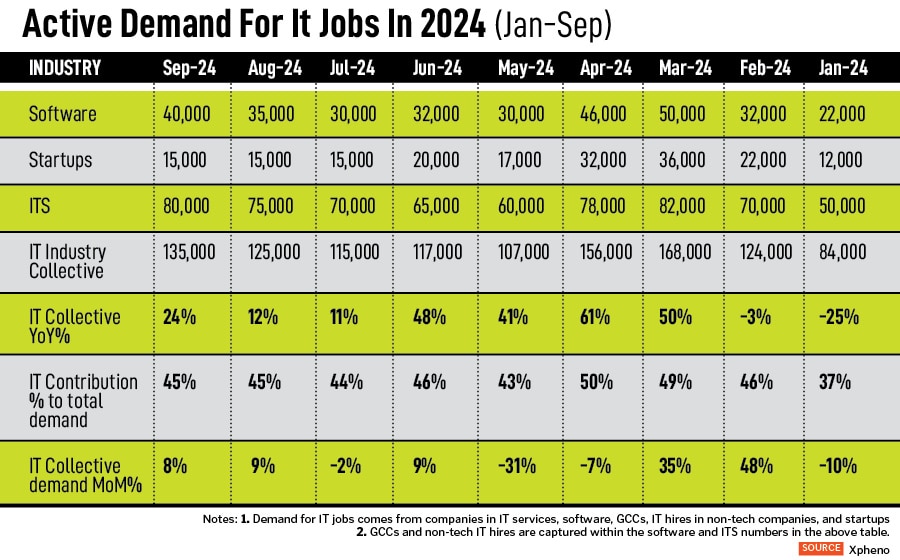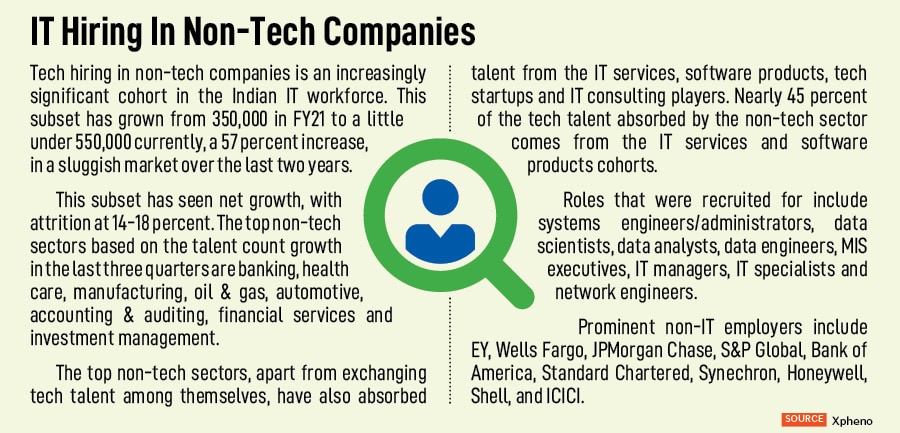IT hiring: 5 takeaways on what's driving a modest pickup
In the last two months, there's been a modest increase in open IT positions. IT services companies, however, aren't behind it
 IT services companies have seen no change in hiring, and software product companies are mostly consolidating their existing workforce.
Image: Shutterstock
IT services companies have seen no change in hiring, and software product companies are mostly consolidating their existing workforce.
Image: Shutterstock
Kamal Karanth, co-founder and CEO at Xpheno, a Bengaluru-based staffing specialist, explains what’s unfolding. Here are five takeaways:
1. There’s been a modest uptick in the last two months
IT job openings today still constitute nearly half of the total white-collar positions in corporate India (See table: 45 percent in September). However, that’s a climb down from accounting for more than two-thirds of vacancies in India’s corporate sector during the peak of the IT surge in the immediate post-Covid period.
IT industry lobby Nasscom’s data shows the sector hired 2,30,000 people net in FY22 and only 60,000 in FY23, as the surge reversed into a global tech cut back due to macroeconomic uncertainties. Nasscom estimated that FY24 also saw about 60,000 net hires for the IT sector, with the total workforce at about 5.34 million.
This fiscal year, in August and September, there have been some green shoots, but this increase is still modest, in the range of about 10 percent. The number of active IT job openings in May was 107,000, Xpheno estimated. This rose to 125,000 in August and 1,35,000 in September.
These are still low, compared to March and April figures this year. And the current quarter, because of the larger number of holidays, will likely continue to see lower numbers.




















